A partnership headed by Trout Unlimited will also install wood structures that replicate original habitat
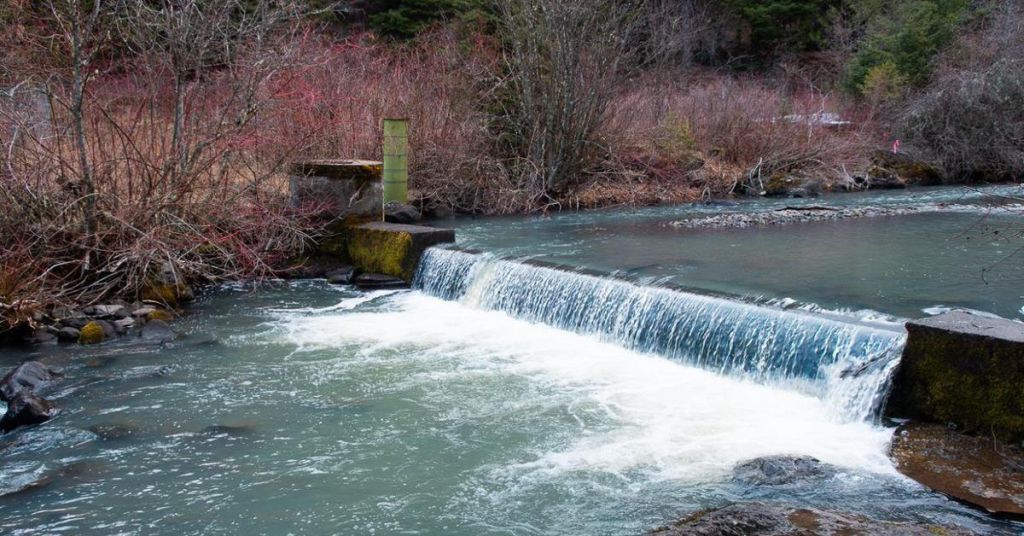
Obsolete: Seen here at high water, the dam slated for removal is between four and five feet high. In eastern Oregon, Indian Creek flows into the Grande Ronde River. Photo by Levi Old
By Alex Wittwer. The Observer, August 16, 2021.
A project to remove two dams along Indian Creek near Elgin, Oregon, is underway.
Led by Trout Unlimited, a coalition of groups will remove the two, small outdated diversion dams on the creek, along with removing an old roadbed and its culvert in an effort to restore spawning habitat and rearing grounds for juvenile fish, including lower Snake River steelhead, chinook salmon, bull trout and redband trout.
Some of the fish species this project will help are endangered, including steelhead.
Each dams is about four or five feet high.
MORE: Thermal hopscotch: How Columbia River salmon are adapting to climate change
“It is really helpful to have a return back to the state it was supposed to look like, and that allows for more resilience in the ecosystems,” said Emery Hansell, river communications specialist with Trout Unlimited.
The groups plan to break ground on the project this week. Officials expect the project will run approximately three to four weeks in total, and open up nearly 10 miles of connected habitat in the area.
The project is a collaboration between Trout Unlimited, Hancock Natural Resource Group, Hanging Rock Excavation & Construction, the Grande Ronde Model Watershed, National Fish and Wildlife Foundation and Bonneville Power Administration.
Creeks need wood
Removing the obstructions will allow for the easier passage and rearing of juvenile fish as they travel through the Grande Ronde River. But that’s only one benefit that will come with the removal of the dams.
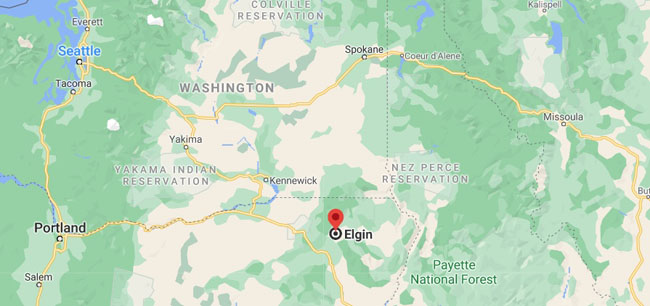
Critical habitat: Both dams occupy spawning grounds that are both scenic and important. Google Maps
“There is more than just the passage going on,” said Levi Old, northeast Oregon project manager for Trout Unlimited. “You will, a lot of times, have a constricted floodplain so you’re moving water more efficiently through an area near the dam, which affects the local geomorphology. By removing these two dams, we’re going to open up about 1.5 acres of historic floodplain habitat that had been cut off.”
The project also will add 22 large wood structures to the creek in order to create habitat for fish that would protect them from predators, help with sediments sorting and offer shade from the sun. The introduction of these wood structures will help restore the creek to something near its original state.
“Streams have evolved with heavy woodloads in them, and historically humans have taken them out, but these fish have evolved to use the shade and cover,” Old said. “A creek like Indian Creek is especially important for spawning and rearing of ocean-going fish and resident trout species.
“And as we’re starting to feel the effects of a changing climate, there is still cold water in places like Indian Creek.”
MORE: As salmon cook in rivers, pressure on Biden mounts
While removing debris from a creek improves the efficiency of water flow it damages the waterway’s natural state, with far-reaching consequences.
“If you take out all the wood, you turn a creek into a ditch. All the fine sediments and small gravels which salmon and trout use to spawn are going to be swept out of them. You’re left with big boulders and cobbles,” Old said. “A functioning stream has a bunch of wood in it, and it catches sediments, builds pools and changes the geomorphology of the stream.”
470 small dams
Restoration work will also include planting native riparian species along the creek.
According to the Oregon Department of Fish and Wildlife, there are more than 470 small dams in northeastern Oregon similar to the ones being removed in Elgin.
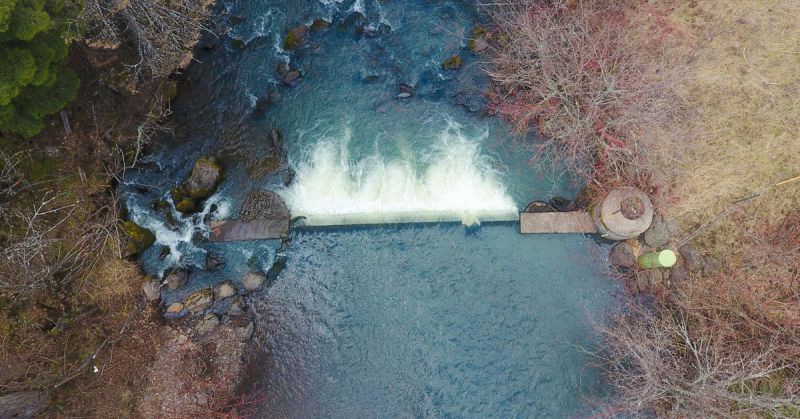
Down the block: Small dam, big impact. Photo by Connar Stone
“Anytime we can open up more habitat for spawning and rearing resident and ocean-going fish it’s a big win,” said Old.
Columbia Insight is publishing this story as part of the AP StoryShare program, which allows newsrooms and publishing partners to republish each other’s stories and photos.




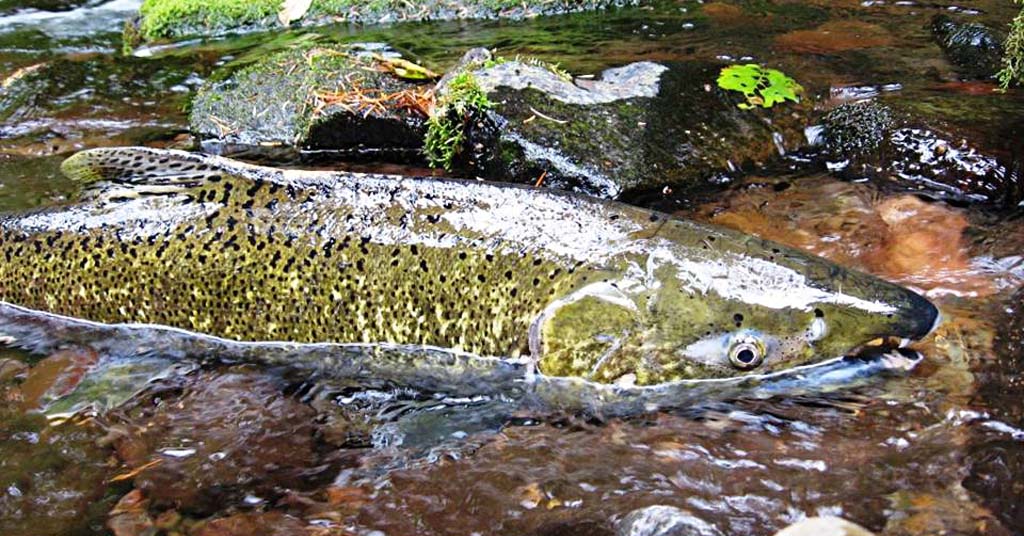
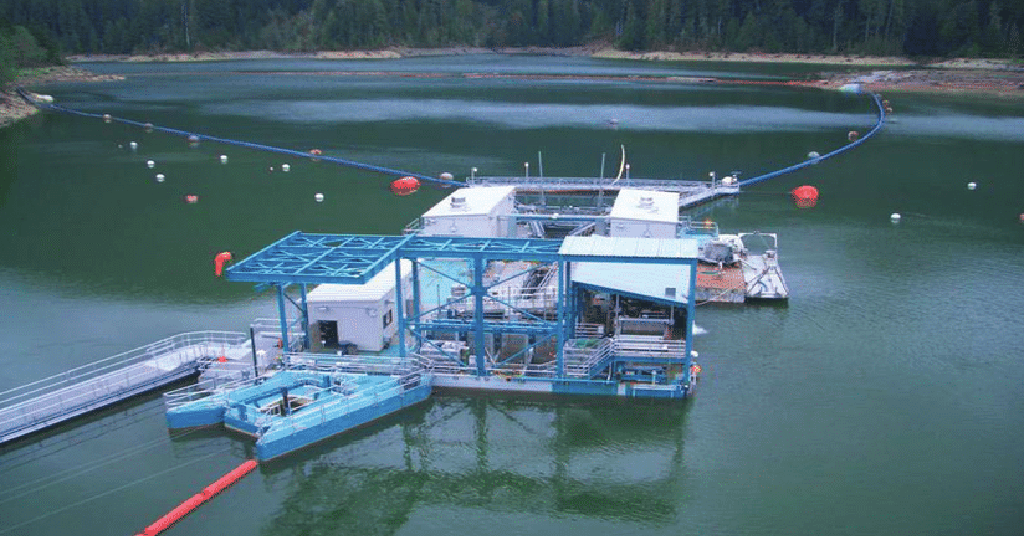
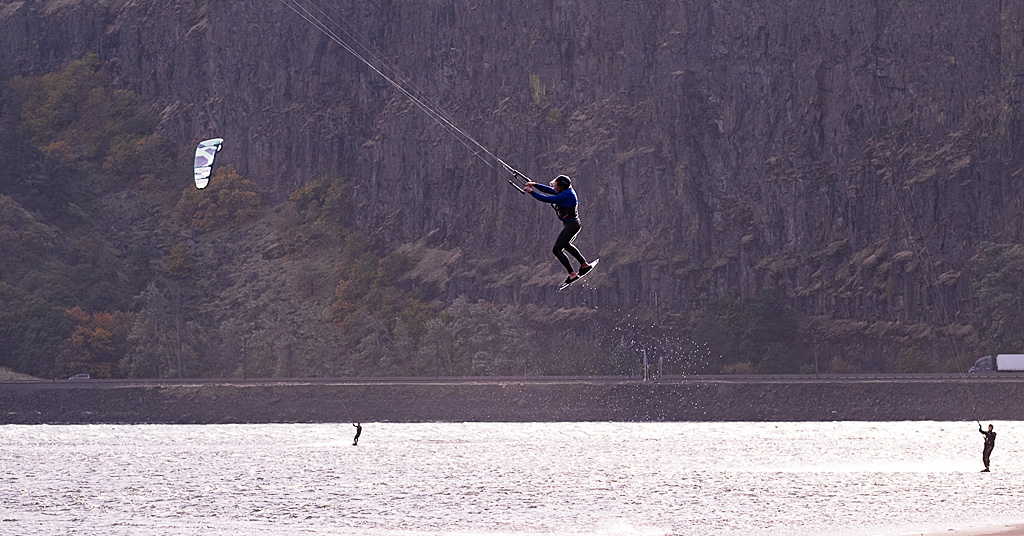




I’m confused: they’re removing the dams in order to restore a “wild” habitat, but then they’re constructing 22 structures “to protect fish from predators.” Is that really “wild?” I know the story says the structures are intended to restore a habitat to its “wild” state – but wild streams become flooded. Aren’t the “predators” part of nature too?
It seems to me the definition of “wild” is quite arbitrary or really the subject of a Trout Unlimited value-judgement. After a certain time, structures like dams settle in – as if a boulder fell across a stream. It seems like public money is just being used to push dirt around.
Hello Thomas, Large wood was historically found in most all of our streams throughout the PNW. Throughout the years, humans have decided to pull wood out of streams as if it were a bad thing. Fish use large wood structures for shade and cover. Predators aren’t necessarily a bad thing, you’re right. However, providing fish and wildlife the type of complex habitat, shade and cover that they evolved with is important work. There is strong science that fish use this type of habitat for a variety of parts of their life cycle. Please connect with us and I’ll take you out to visit some projects if you’re ever in NE Oregon. – Levi
Pushing dirt instead of educating our children with writing, reading and math
In the middle of a gigantic (their words) drought they are destroying water storage devices? When in the world will the politicians get a brain? They can certainly afford at least one in Salem with all the taxes they pile on us.
Hello DJ,
I’d like to invite you to come out and visit our projects one day. Both of these dams are obsolete and have been for over 20 years. Neither was actually used as a water storage device. One never stored water at all.
Hello Thomas, Large wood was historically found in most all of our streams throughout the PNW. Throughout the years, humans have decided to pull wood out of streams as if it were a bad thing. Fish use large wood structures for shade and cover. Predators aren’t necessarily a bad thing, you’re right. However, providing fish and wildlife the type of complex habitat, shade and cover that they evolved with is important work. There is strong science that fish use this type of habitat for a variety of parts of their life cycle. Please connect with us and I’ll take you out to visit some projects if you’re ever in NE Oregon. – Levi